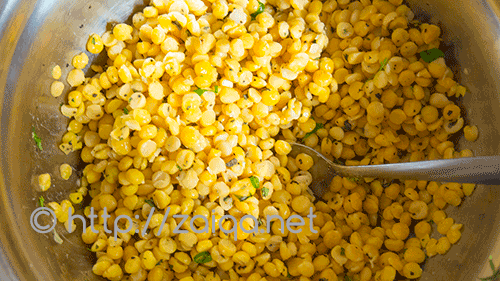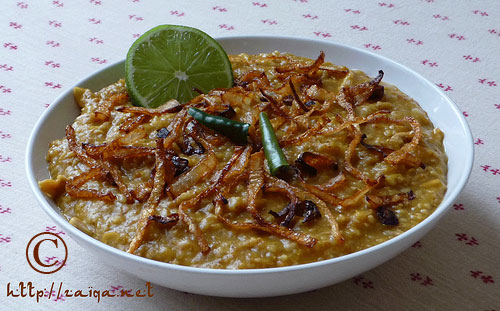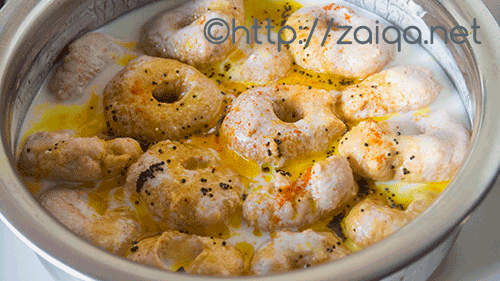We celebrated Eid-Ul-Fitr, our festival after the month of fasting 3 days ago. On Eid I had prepared Chicken Biryani, Sheer Qurma and Cholay.
Sheer Qurma is a meetha/dessert prepared using roasted fine Vermicelli Noodles, or Seviyan cooked in milk with some fried dried nuts and sprinkled with saffron and nutmeg, cardamom powders to enhance the savory flavour of the dessert.

Sheerqurma
It is traditionally served after the Eid prayers to the entire household and also to all the guests who arrive to greet you on Eid, and is served hot along with other snacks, I usually serve spicy Cholay along. Some people like this dessert rich and slightly thick in consistency and some people like it a bit thin in consistency with less seviyan and more of milk. To make it rich, you can add khoa to it, or add a bit of condensed milk. I and my family prefer the latter kind. If you like it thick, you can cook the Sheer Qurma a bit more on medium heat till you get your desired consistency.
Sheer Qurma – Vemilcelli Cooked in Fragrant Milk
Serves: 4
Ingredients:
*Fine* Vermicelli noodles/Seviyan – 3/4 cup
Ghee/Oil – 2 tbsp
Almonds – 1 tbsp, deskined and thinly sliced
Pistachio – 1 tbsp, halved
Chironji nuts – 1 tbsp, soaked in water for 15-30 minutes and skinned
Melon seeds – 1 tbsp, shelled
Dates – 5 dates, halved and stoned
Saffron strands/Zafraan – 1/2 tsp
Raisins/Kishmish -1 tbsp
Milk – 5 1/2 cups
Nutmeg powder – 1/4 tsp
Green cardamom/Elaichi powder – 1/4 tsp
Green Cardamom/Elaichi – 1, whole
Sugar – 4 to 5 tbsp
Method:
1. Soak the saffron and the halved and deseeded dates in 1/2 cup warm milk. Cover and keep aside.
2. Pour milk into a large pan. Throw the skin of the whole cardamom and add the seeds to the milk. Boil milk in the pan at high heat with sugar and green cardamom powder, nutmeg powder until it is reduced by one-fourth.
3. In a heavy bottomed pan at medium low heat add ghee/oil and stir-fry the raisins, almonds, chironji, pistachio and melon seeds separately for just a few seconds until golden and remove using a slotted spoon into a small cup and keep aside. In the same oil/ghee roast the vermicelli noodles stirring them until they are a just few shades dark. Pour the reduced milk into it and let it come to a boil once. Add the dates and the saffron with the milk in which they have been soaking. Cover and let it cook for 2-3 minutes. By now the noodles must have become very soft. Remove from heat. It can be served hot or cold.
Note-Make Ahead:You can roast the vermicelli and store in the refrigerator for more than a week, a make ahead for this dish. If you prepare the whole thing and store it in the refrigrerator it will become a thick paste in consistency as the days pass. You can also fry the nuts and store in the refrigerator a day before to prepare this sweet savory instantly when your guests arrive, as you will just have to cook it all in milk and serve.
Luv,
Mona




